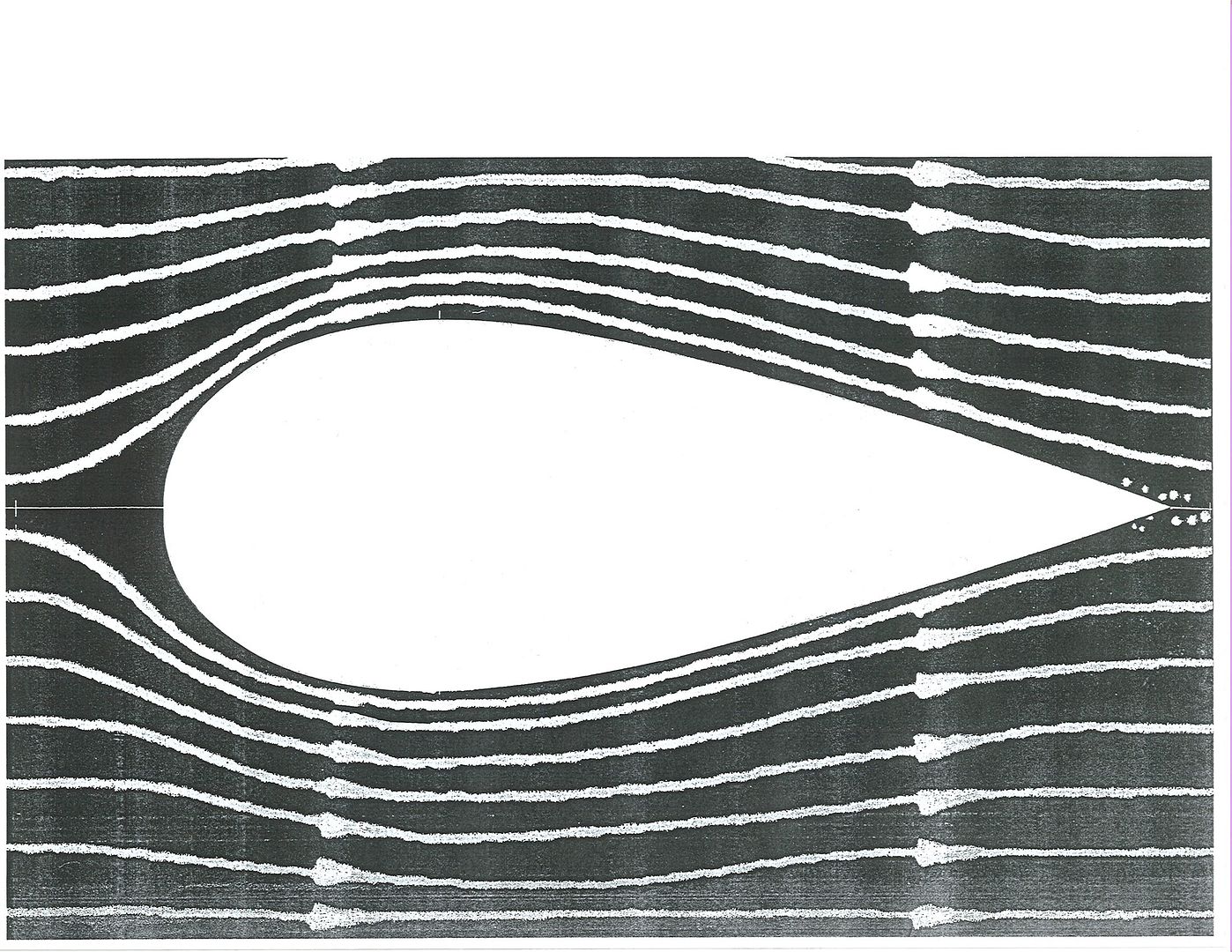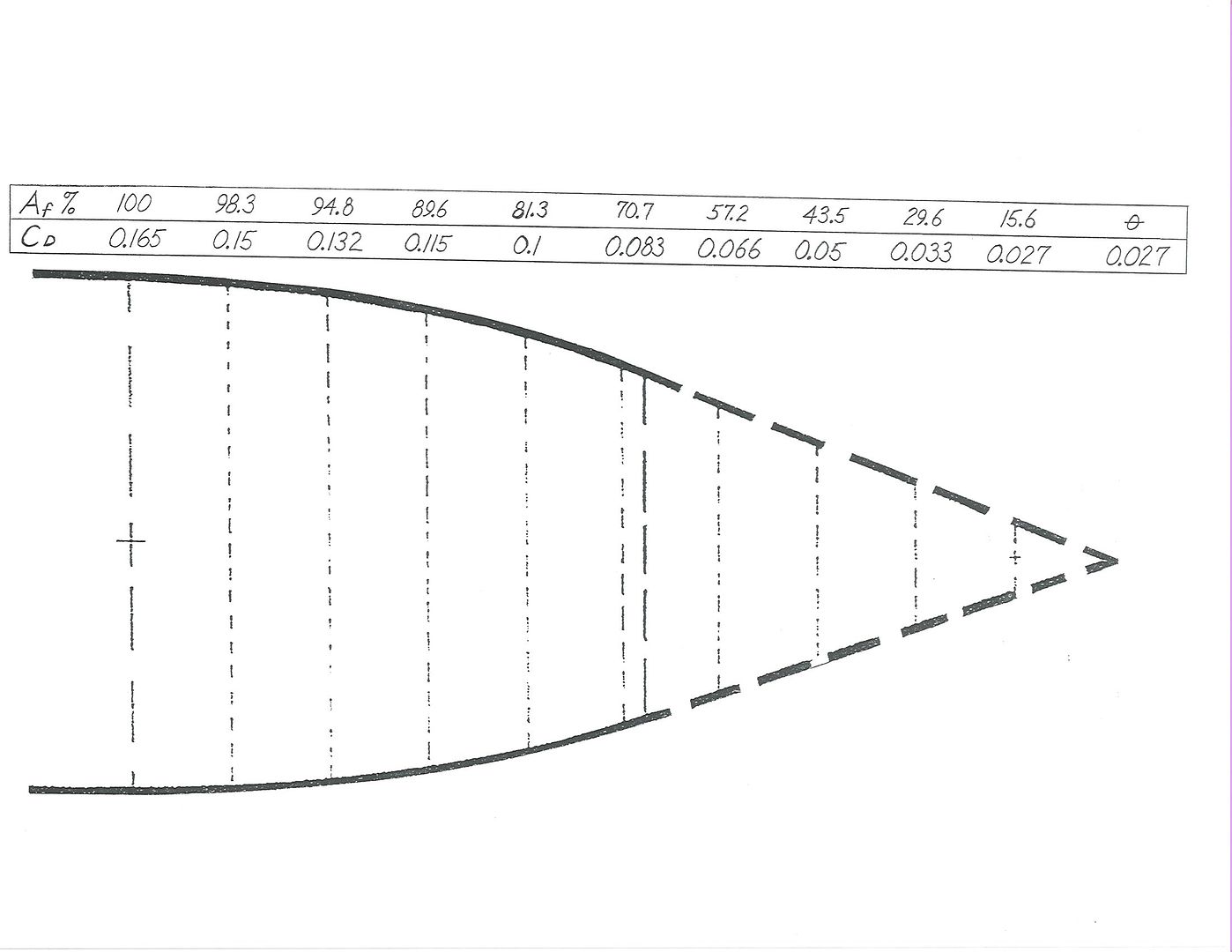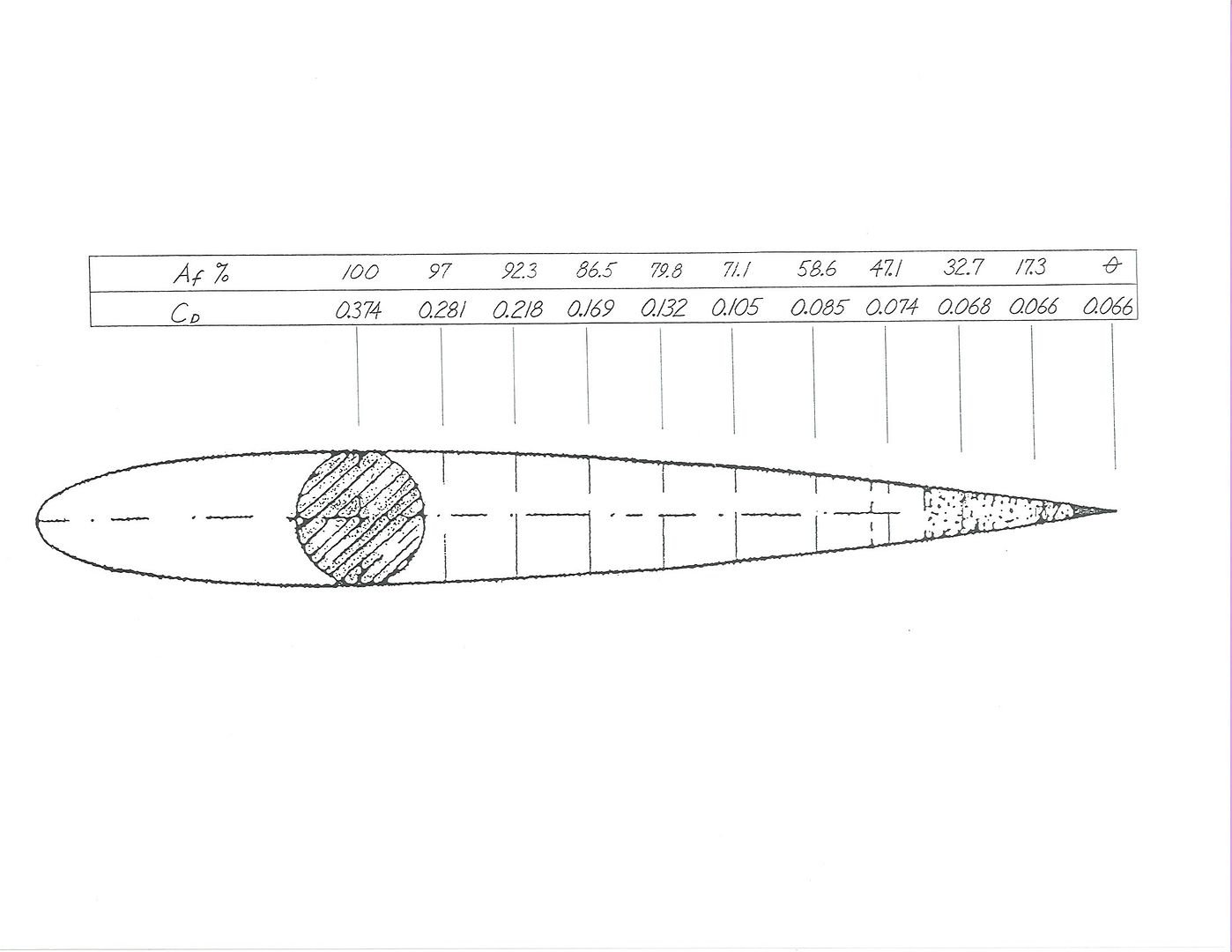I simplified a few images to help illustrate the relationship between tail truncation and drag coefficient.
Of course,the full tail gets steamline flow

With Mair's boat tail,I've divided the length into 10-equal length segments and given the percentage of original frontal area for each segment,along with it's associated drag coefficient as reported by Mair (note these Cds do not represent any skin friction).You'll notice that at around 80% length,there's no longer any drag decrease.This is indicating Morelli's 'fluid tail.'

Here is Lehmann and Kosin's fuselage,also divided into 10-equal-length segments,along with each segments associated percentage of original frontal area and drag coefficient.Again,you see the 'fluid tail' occurring at around 80%,and no appreciable drag reduction beyond 80%.

With car bodies based upon half-bodies of these shapes we'd have to superimpose the drag associated with wheelhouse and wheels,but you can clearly see the relationship with tail truncation and drag.